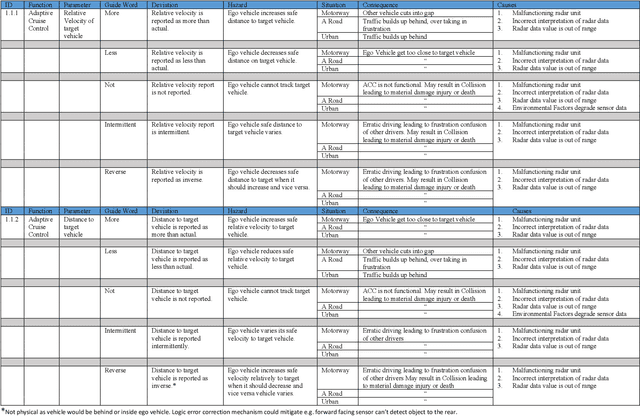John Molloy
Operationalizing Assurance Cases for Data Scientists: A Showcase of Concepts and Tooling in the Context of Test Data Quality for Machine Learning
Dec 08, 2023Abstract:Assurance Cases (ACs) are an established approach in safety engineering to argue quality claims in a structured way. In the context of quality assurance for Machine Learning (ML)-based software components, ACs are also being discussed and appear promising. Tools for operationalizing ACs do exist, yet mainly focus on supporting safety engineers on the system level. However, assuring the quality of an ML component within the system is commonly the responsibility of data scientists, who are usually less familiar with these tools. To address this gap, we propose a framework to support the operationalization of ACs for ML components based on technologies that data scientists use on a daily basis: Python and Jupyter Notebook. Our aim is to make the process of creating ML-related evidence in ACs more effective. Results from the application of the framework, documented through notebooks, can be integrated into existing AC tools. We illustrate the application of the framework on an example excerpt concerned with the quality of the test data.
Safety Assessment for Autonomous Systems' Perception Capabilities
Aug 18, 2022



Abstract:Autonomous Systems (AS) are increasingly proposed, or used, in Safety Critical (SC) applications. Many such systems make use of sophisticated sensor suites and processing to provide scene understanding which informs the AS' decision-making. The sensor processing typically makes use of Machine Learning (ML) and has to work in challenging environments, further the ML-algorithms have known limitations,e.g., the possibility of false-negatives or false-positives in object classification. The well-established safety-analysis methods developed for conventional SC systems are not well-matched to AS, ML, or the sensing systems used by AS. This paper proposes an adaptation of well-established safety-analysis methods to address the specifics of perception-systems for AS, including addressing environmental effects and the potential failure-modes of ML, and provides a rationale for choosing particular sets of guidewords, or prompts, for safety-analysis. It goes on to show how the results of the analysis can be used to inform the design and verification of the AS and illustrates the new method by presenting a partial analysis of a road vehicle. Illustrations in the paper are primarily based on optical sensing, however the paper discusses the applicability of the method to other sensing modalities and its role in a wider safety process addressing the overall capabilities of AS.
 Add to Chrome
Add to Chrome Add to Firefox
Add to Firefox Add to Edge
Add to Edge